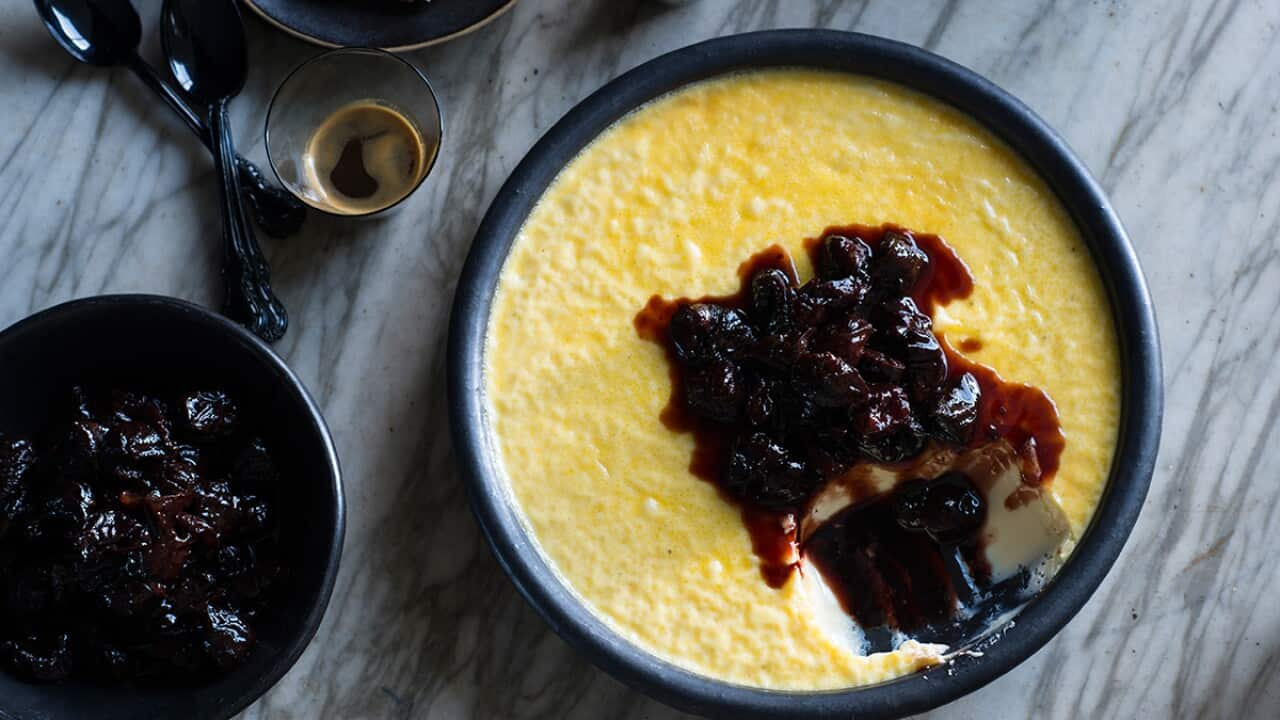serves
10-12
prep
20 minutes
cook
50 minutes
difficulty
Easy
serves
10-12
people
preparation
20
minutes
cooking
50
minutes
difficulty
Easy
level
Ingredients
Baked custard
- 500 ml (2 cups) milk
- 500 ml (2 cups) pouring cream
- 1 vanilla bean, split lengthways and seeds scraped
- 5 eggs, at room temperature
- 110 g (½ cup) caster sugar
Macerated prunes
- 250 ml (1 cup) port
- 400 g prunes, pitted and halved
Macerating time 1 day
Cooling time 30 minutes
Chilling time 1-2 hours
Instructions
To make the macerated prunes, heat the port in a small saucepan over medium heat until hot but not simmering. Pour over the prunes in a heatproof bowl, cover and set aside to macerate for 1 day.
Preheat oven to 160°C (140°C fan-forced). Brush a shallow 2 litre (8 cup) ovenproof dish with the melted butter to lightly grease and place in a large roasting pan or ovenproof dish.
Combine the milk, cream and vanilla bean and seeds in a medium saucepan and heat over low heat until almost simmering. Use a balloon whisk to whisk the eggs and sugar until well combined. Gradually whisk in the hot milk mixture. Strain the custard into a large jug and then pour into the greased dish. Add enough boiling water to the roasting pan to reach half way up the sides of the dish.
Bake in preheated oven for 40-50 minutes (see Baker’s tips) or until set on top but the custard still wobbles slightly when the dish is shaken gently. Remove from the oven and transfer to a wire rack to cool for 30 minutes. Place the custard in the fridge for 1-2 hours or until cooled completely.
Serve the custard in spoonfuls accompanied by the macerated prunes with some of the port.
Baker’s tips
• The baking time will depend on the depth of your dish – the deeper the dish the longer the baking time will be. Always check your custard after 40 minutes though and return to the oven for another 5-10 minutes if it’s not ready.
• This custard will keep covered in the fridge for up to 2 days. Stand at room temperature for 30 minutes before serving.
Photography by Alan Benson. Styling by Sarah O’Brien. Food preparation by Kerrie Ray. Creative concept by Lou Fay.
Cook's Notes
Oven temperatures are for conventional; if using fan-forced (convection), reduce the temperature by 20˚C. | We use Australian tablespoons and cups: 1 teaspoon equals 5 ml; 1 tablespoon equals 20 ml; 1 cup equals 250 ml. | All herbs are fresh (unless specified) and cups are lightly packed. | All vegetables are medium size and peeled, unless specified. | All eggs are 55-60 g, unless specified.









